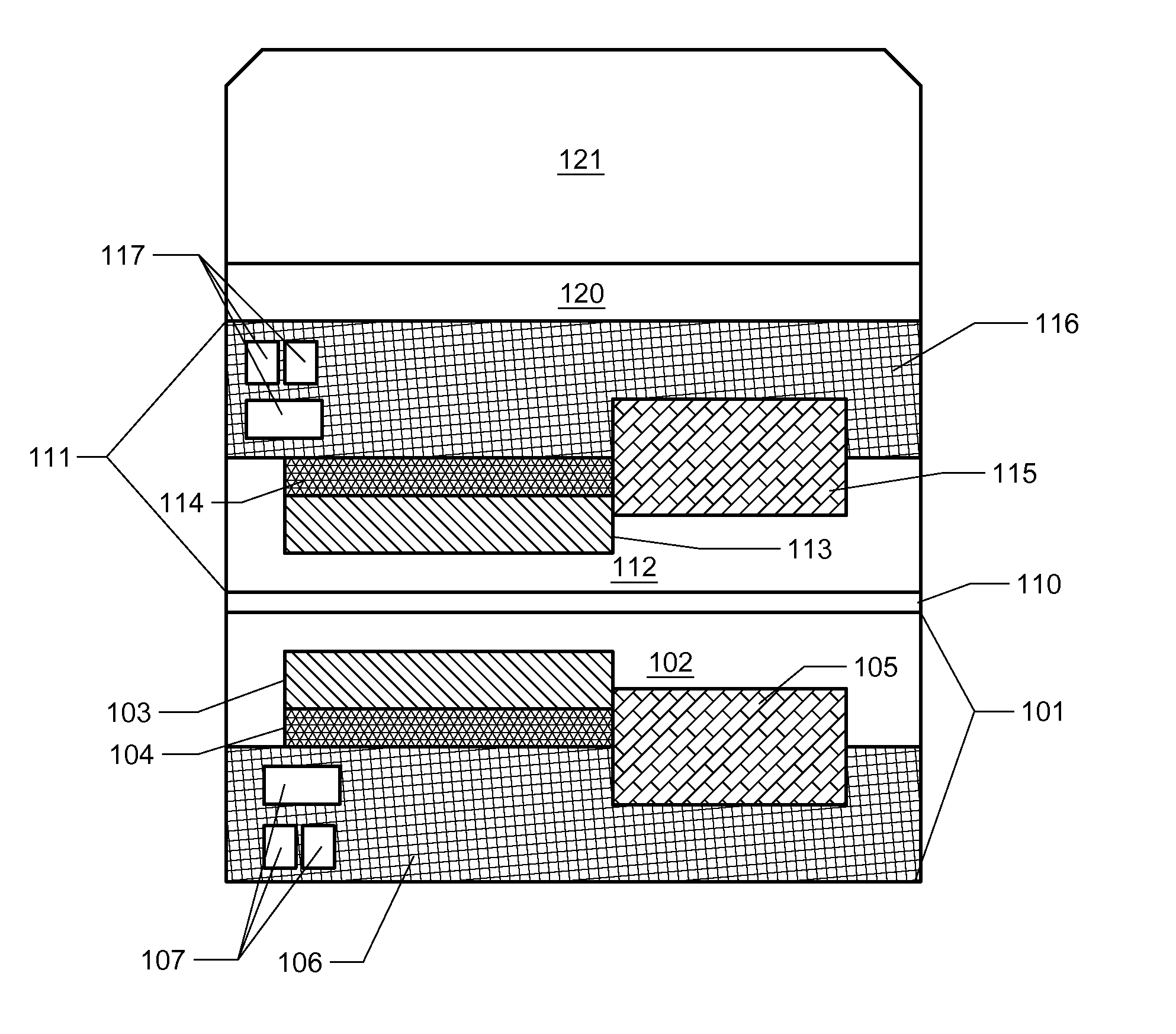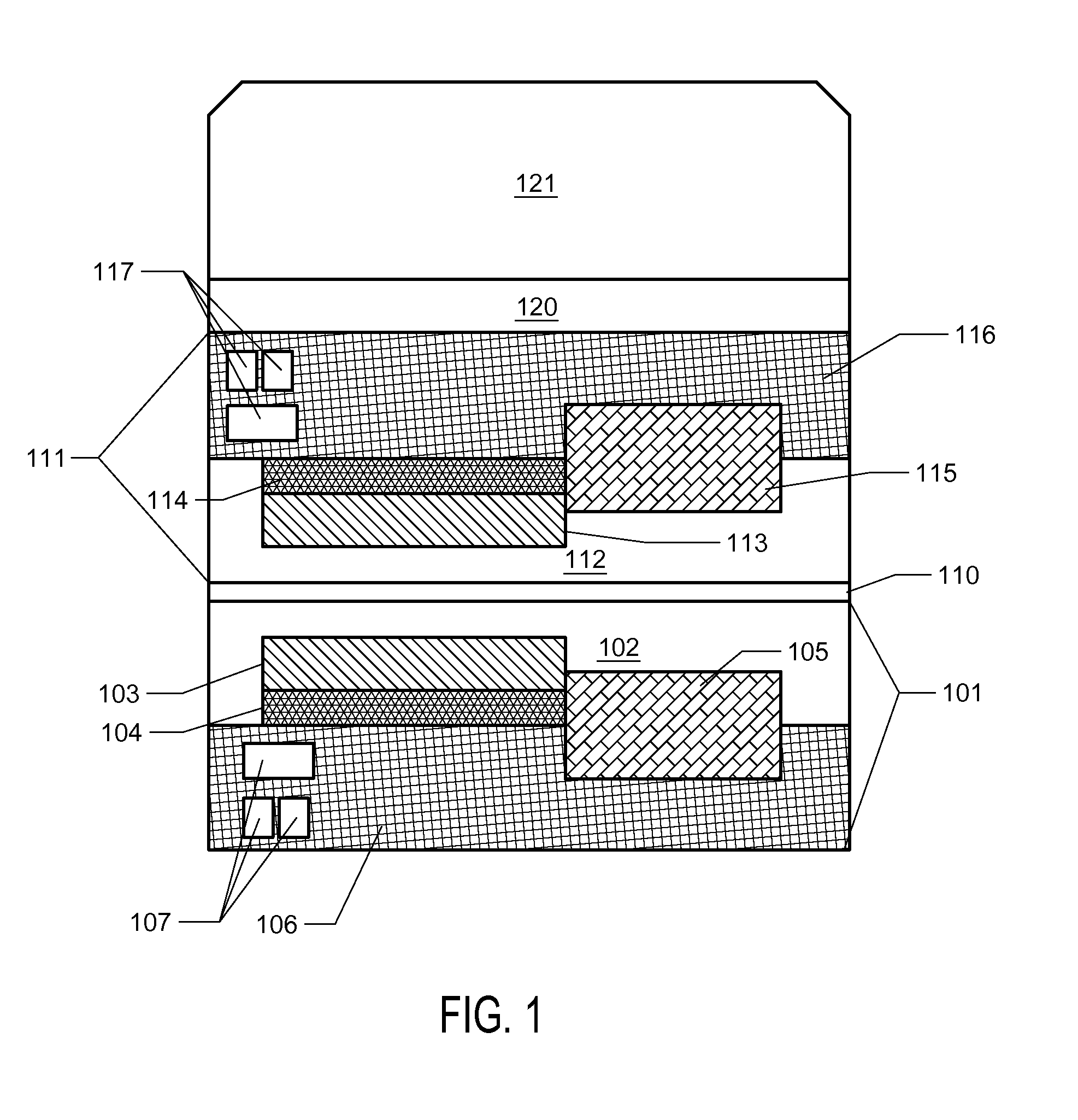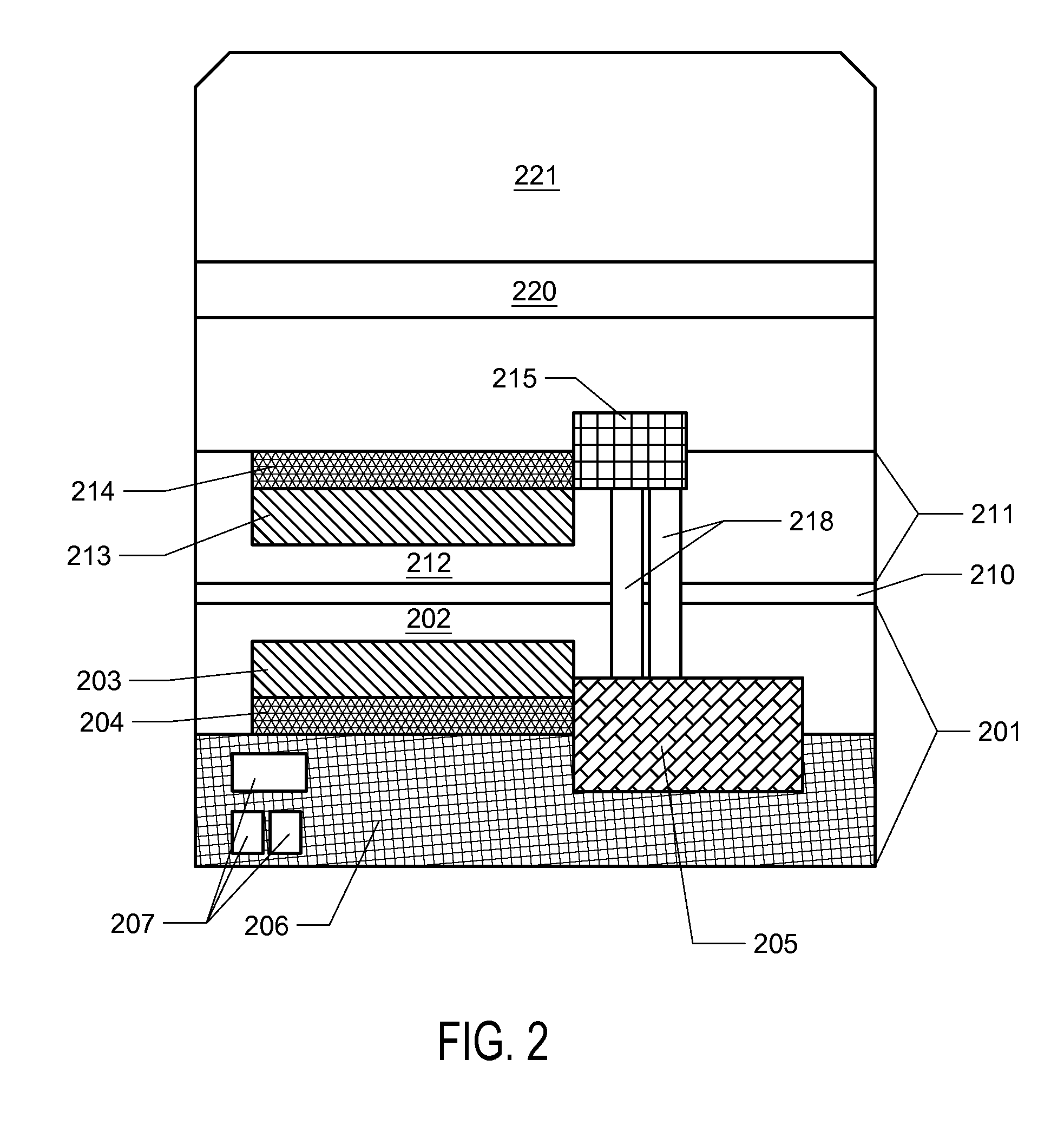Stacked Photodiodes for Extended Dynamic Range and Low Light Color Discrimination
a photodiode and dynamic range technology, applied in the field of image sensors, can solve the problems of limited dynamic range, conventional image sensors, and poor design of sensors, and achieve the effect of extending the dynamic range and the system dynamic rang
- Summary
- Abstract
- Description
- Claims
- Application Information
AI Technical Summary
Benefits of technology
Problems solved by technology
Method used
Image
Examples
Embodiment Construction
[0014]The novel image sensors, and methods of using them, presented herein are based on the use of stacked photodiodes, wherein each photodiode is present on a separate wafer and the wafers are subsequently stacked to create the functional device. Advantageously, this allows for each of the photodiodes in the stack to be pinned. As known in the art, pinning is the use of a relatively heavily doped layer upon the photodiode's storage well region, which helps maintain the photodiode at a fixed potential and greatly decreases noise from surface interface effects.
[0015]In one implementation, the function of the photodiode stack is to provide a greatly increased overall well capacity resistant to saturation when photon flux is high, i.e., the stacked photodiodes are utilized to extend the dynamic range of the sensor. In the event that the upper photodiode becomes saturated, the lower photodiode or photodiodes will collect a measurable signal that can be used to determine total flux incid...
PUM
 Login to View More
Login to View More Abstract
Description
Claims
Application Information
 Login to View More
Login to View More - R&D
- Intellectual Property
- Life Sciences
- Materials
- Tech Scout
- Unparalleled Data Quality
- Higher Quality Content
- 60% Fewer Hallucinations
Browse by: Latest US Patents, China's latest patents, Technical Efficacy Thesaurus, Application Domain, Technology Topic, Popular Technical Reports.
© 2025 PatSnap. All rights reserved.Legal|Privacy policy|Modern Slavery Act Transparency Statement|Sitemap|About US| Contact US: help@patsnap.com



